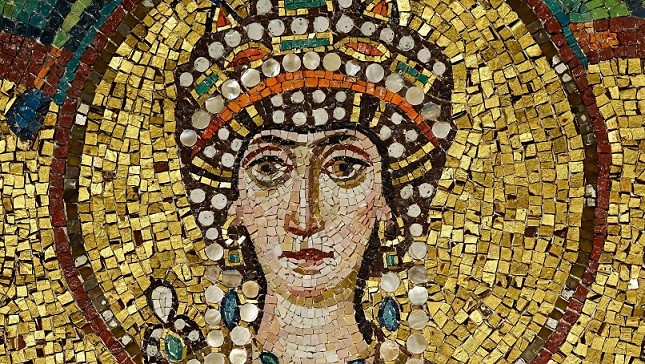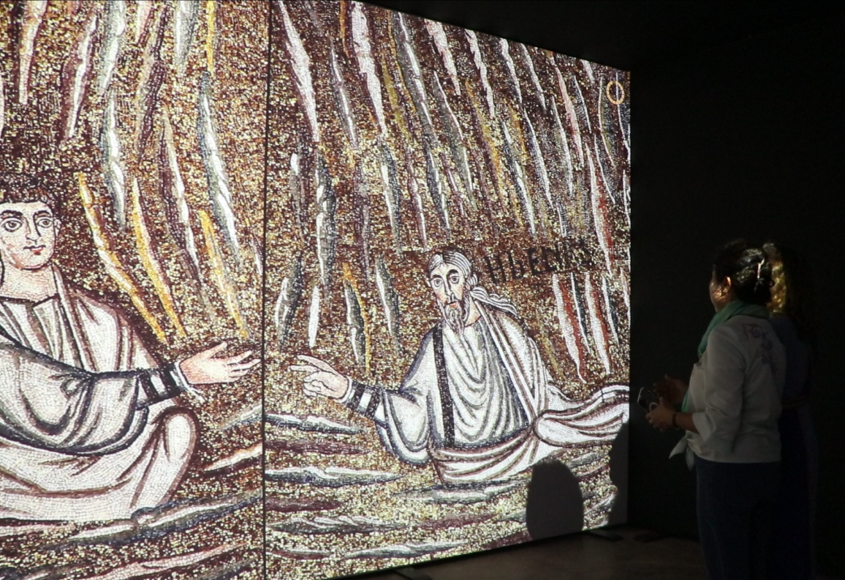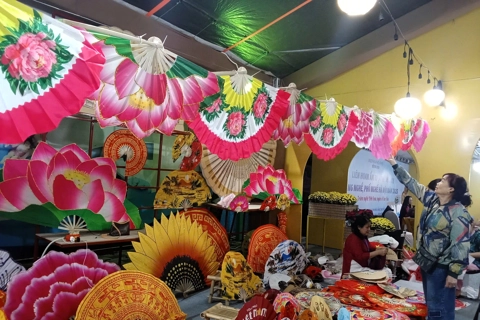Exhibition explores Italian mosaic art
Through a unique and long-standing type of mosaic, the exhibition tells stories of epics, religions and the most brilliant and outstanding socio-cultural periods of ancient Rome.
The multimedia exhibition Mosaico: Italian Code of a Timeless Art is on display at the Vietnam Museum of Ethnology, starting its tour of Asian countries to present traditional Italian art.
The event is promoted by Magister Art, the Italian Ministry of Foreign Affairs and International Cooperation and the Italian Embassy in Hanoi. It will run until April 7 at the Vietnam Museum of Ethnology, 1 Nguyen Van Huyen Street, Hanoi.
The itinerary of the exhibition is conceived as a journey through 2000 years of Italian mosaic art. It explores the images, symbols, techniques and materials of some of the most famous and iconic Italian mosaics.
Through an immersive multimedia experience, visitors will be able to admire the most evocative mosaics of Rome, Pompeii, Aquileia, Ravenna, Palermo/Monreale, Piazza Armerina and Baia, following a route in stages.
The exhibition is divided into six zones, corresponding to the six regions of Italy.
| A work of art on display at the exhibition. Photo: Ngo Minh/The Hanoi Times |
Zone 1 is about Rome and Pompei. The Rome section tells of the capital's glorious past and the process of urbanization that took place over many centuries. There is also mosaic art under the influence of Christianity through murals in basilicas. As for Pompeii, there is an outstanding tile work depicting the story of Alexander the Great in confrontation with the powerful Persian Empire.
Zone 2 is dedicated to Aquileia. It is best known for the mosaic on the floor of the Basilica of St. Mary's Assumption, which depicts the historical moment when the Emperor Constantine decreed religious freedom.
Zone 3, Ravenna, features paintings in mausoleums and basilicas, with brighter colours that have more spiritual effects.
Zone 4 is reserved for Pelermo/Monreale, with its majestic, breathtaking, harmonious and complex multiculturalism depicted in chapels and churches.
Zone 5 goes through Piazza Armerina, which takes you into the rooms of the ancient Villa Romana del Casale, a part of everyday moments of the Roman Empire in the first centuries after Christ.
Zone 6 tells about Baiae - an underwater archaeological area of a once prosperous port sunk to the bottom of the sea.
| The exhibition presents the quintessence of Italian art. Photo: Ngo Minh/The Hanoi Times |
Ambassador Marco Della Seta explained that mosaics are very durable. Materials such as stone, glass and shells contribute to this characteristic.
"Some of the mosaics in the exhibition are 2,000 years old and still look like new. The special technique of mosaic painting has many similarities with Vietnamese lacquer painting," he said.
As a visitor, artist Cristina Gonzalez (Spain) said that the exhibition really helps visitors to understand more about mosaic techniques, symbols and themes, especially as people can't lift the mosaics to display them everywhere.
Cristina Gonzalez has also been strongly influenced by the paintings in terms of technique. She specialises in oils and acrylics, but has long been interested in Vietnamese lacquer and has spent almost 4 years studying this material. With certain similarities to the mosaic industry, the exhibition is even more interesting for Cristina.
Mosaic art originated in Mesopotamia in the 3rd millennium BC and then spread to many regions, with the strongest development in ancient Greece and Rome (now Italy).
In Vietnam, the most popular mosaic works are the Ceramic Road (celebrating the 1000th anniversary of Thang Long-Hanoi), ceramic mosaic murals in Khai Dinh Tomb, Hue City and works of Chuon Ngo mother-of-pearl mosaic craft village (Phu Xuyen, Hanoi).













